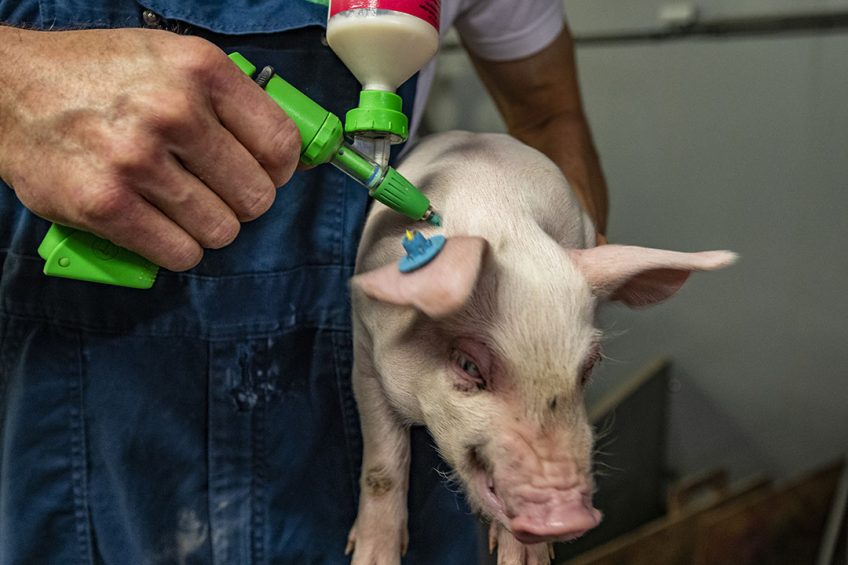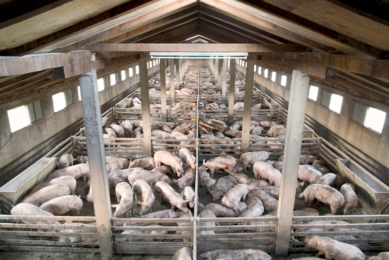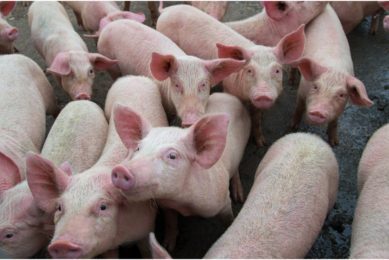ESPHM review, day 1: Vaccines and drugs in perspective

Just like many other global events, the European Symposium of Porcine Health Management is held digitally. On 2 consecutive evenings, keynote speakers address current pig health issues live for a global audience. On Wednesday, April 14, veterinary health experts reflected on safety and security of vaccines and drugs.
 The first keynote speaker was Lars Larsen, professor of veterinary virology at the University of Copenhagen, Denmark. He zoomed in on modified live vaccines (MLV) and addressed various aspects of these vaccines that may need improvement.
The first keynote speaker was Lars Larsen, professor of veterinary virology at the University of Copenhagen, Denmark. He zoomed in on modified live vaccines (MLV) and addressed various aspects of these vaccines that may need improvement.Creation of modified live vaccines
Modified live vaccines, he said, are sometimes made by genetic modification, but most of the time they are created by using a wild-type strain. Attenuation will make the virus much less harmful. Even though MLVs have proved themselves and are very needed, there are some drawbacks to the MLV, Prof Larsen said – and that is all related to the fact that viruses mutate.
Interesting was Prof Larsen’s attention for virus recombination. He shared insights in a situation in Denmark in 1992, when a vaccine for Porcine Reproductive and Respiratory Syndrome virus (PRRSv) was recombined with an existing virus, which led to a “reversion to virulence,” a situation he described as “the Danish PRRSv disaster”.
He also touched on a recent recombination in a Danish boar station, in which a recombination between 2 type 1 PRRS vaccine strains caused severe outbreaks in Danish pigs. Prof Larsen also presented a theory about how that might have happened, see illustration below.

Unspecific effects of using vaccines
Prof Larsen also wondered if virus evolution could be driven by vaccines. It is a theory difficult to prove he said. He also mentioned unspecific effects of vaccines (NSE), or unexpected side effects, positive or negative, of vaccination with MLV.
He closed off saying that tighter regulations from the European Medicines Agency (EMA) are to be expected with regard to MLV. He proposed more independent studies are needed to investigate unspecific effects of vaccines; he also asked the question whether mass vaccination with MLV is really necessary in all cases?
 Using drugs in the right way
Using drugs in the right way
The 2nd keynote speaker of the 1st digital ESPHM was Lorenzo Fraile, associate professor in epidemiology and pharmacology at the University of Lleida in Spain. His focus was more on the use of drugs and whether these are used in the right way.
Registration of veterinary medical products (VMP), he said, is a time consuming process, because it needs to be clear that the products are safe for the vet or farmer, for pigs, for the environment and ultimately for the consumer eating meat products.
Pharmacovigilance: how do drugs work in practice?
In the context of that process Prof Fraile mentioned the phenomenon of “pharmacovigilance,” or the habit of the veterinary community to keep an eye on the practical effects of drugs – and the reporting in case things turn out differently than expected. In pigs, he said, pharmacological events are relatively low compared to for instance pets, even though VMPs are being used. Would that be a matter of underreporting, he wondered.
Interesting was also the fact that a set percentage of pigs needs to be tested for residue levels. The number of non-compliant samples with regard to withdrawal periods, he said, is extremely low in pig production. That suggested that the withdrawal period is almost always respected. Non-compliant samples, he said, could be associated with non-deliberate mistakes.
Antibiotics classification: the One Health principle
In the context of the “One Health” principle, Prof Fraile mentioned of the European classification of drugs, from categories A to D:
- Category A (avoid), including antibiotics not allowed for pigs in the EU;
- Category B (restrict), including quinolones, 3rd and 4th generation cephalosporins and polymyxins, only use to mitigate human health risk;
- Category C (caution), only use these when category D is not available;
- Category D (prudence), the low risk category, yet long treatment periods should be restricted to situations where individual treatment is impossible.
He said that eventually veterinarians should to not only try to justify the use of antibiotics, but the classification should also guide them to select the best possible antibiotics for every occasion, in order to use them as prudently as possible, see also illustration below.

ESPHM 2020+1
The European Symposium for Porcine Health Management (ESPHM) should actually have been held in Bern, Switzerland in 2020. Because of the Covid-19 pandemic, that event was postponed by 1 year. Even a full year later, however, the pandemic was still around, which is why it was decided to hold the event online, while being hosted from Switzerland.
Heiko Nathues, president of the organising European College of Porcine Health Management (ECPHM), explained that in total there are 4 keynote lectures online, 4 more on-demand, apart from 59 oral presentations, 16 flash talks and 432 poster presentations.
The 2022 edition of the event shall be held in Budapest, Hungary – provided that Covid-19 is a thing of the past.












